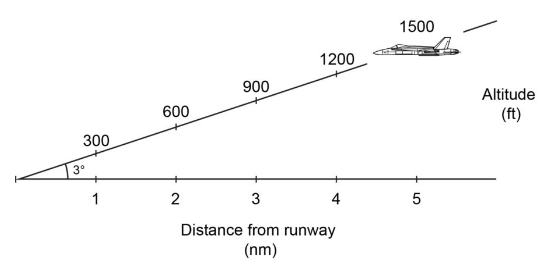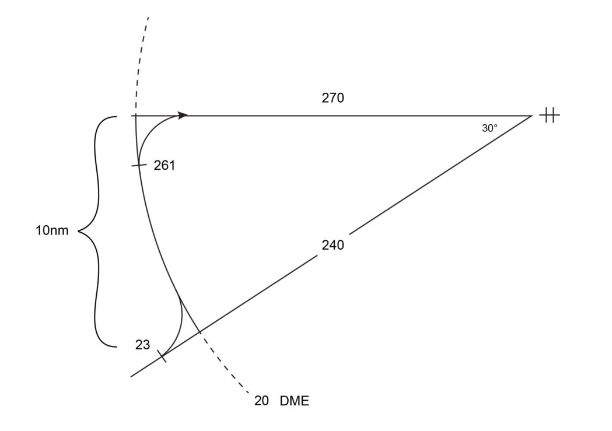Fighter Pilot Math
- Vincent "Jell-O" Aiello

- Sep 5, 2020
- 5 min read
Updated: Oct 19, 2023
“Do you have to be good at math to be a fighter pilot?”
This question comes up a lot—especially from young listeners who, I presume, struggled with math throughout school but nevertheless hope to join the ranks of military aviators. It’s a fair question.
Numbers are one thing. Flying is full of numbers: airspeeds, altitudes, headings, runway labels, time, fuel… all involve numerals. And air combat involves even more—air-to-air employment timelines and air-to-ground delivery “Z-diagrams,” to name a couple.
But how good do you have to be at actual math? The answer is not straightforward.
For background, I was a math major at UCLA. Basic mental arithmetic has always been relatively easy for me, as have percentages and rudimentary geometry, but I’m no René Descartes. Not by a mile. Heck, the only reason I ended up a math major is because the high school counselor helping fill out my college applications grew weary trying to coax a desired field of study out of me. He finally asked, “ok, when you get home from school, what homework do you do first?” I responded “math,” explaining it was the easiest. So, I became a math major.
My course of study was relatively straightforward: algebra, trigonometry, differential equations, statistical analysis… not easy, but all do-able. That is, until I got to the class where there were no numbers.
I kid you not, we had this class—I forget the name of it—where a typical problem was something along the lines of, “If A is a subset of B, and B is in the neighborhood of C, then prove that A is related to C.” It sucked. I could not make sense of it and ended up earning the only D grade I ever received in college. To me, the students who breezed through that class and then grad school (and are likely math professors at colleges around the country now)—they are “good at math,” not me.
But as with so many things in life, being “good” at something is relative. To right-brained folks more adept at creative or expressive disciplines, perhaps I am good at math. The real question, however, is how good do you need to be—mathematically speaking—to fly a fighter jet?
To be sure, designing a fighter requires aerodynamic theories and principles involving advanced mathematics, but flying one requires mainly simple arithmetic. And the most common concept pilots need to master is ‘rate.’
Most of us are already familiar with various rates used in everyday life—like the speed of an automobile or the $3.499 price of gasoline (I hate that trailing 9!). Mathematically, rate is defined as the ratio between two related quantities in different units, like miles per hour or dollars per gallon. Common rates used in flying include speed (kts, knots, or nautical miles per hour), rate of climb or descent (fpm, or feet per minute), and fuel burn (pph, or pounds per hour).
I’m not sure if it is considered being “good at math” to know that flying along at 360 kts is the equivalent to 6 nm per minute, or covering a mile every 10 seconds (Note 1); or that when air traffic control directs you to climb from 20,000 feet to 29,000 feet and to be level within the next six minutes that you need to maintain a minimum climb rate of 1,500 fpm (2), but those are examples of the types of rate calculations that need to become second nature to fighter pilots.
Fuel burn awareness is also important, especially for Navy folks around the ship where fuel is always at a premium—as is a place to land. If I’m in my trusty F/A-18C, for example, burning 2,400 pph per engine at high holding, it’s 20 minutes to land, and I need to cross the ramp with at least a 5.0 (5,000 pounds of fuel on board), how much fuel should I have right now? Easy, 6.6 (3).
Other math I routinely used during my flying career involved angular relationships. Without delving into all the reasons why (let’s leave that to the mathematicians), it is accepted that 1° equates to 100 feet at 1 nm. That is, if an aircraft is flying down a 3° glideslope, then the pilot would expect to be 1,200 feet above the touchdown elevation when 4 miles away, 900 feet at 3, 600 at 2, and 300 at 1.

This works the other way around too. If being vectored to final at 2,000 feet for a 2.5° glideslope then the pilot would expect to intercept glideslope eight miles from the field (4). Being able to make these quick calculations can greatly improve a pilot’s situational awareness, leading to the ever-desirable status of being “ahead of the jet.”
Angular relationship awareness is also useful when dealing with radials from a point. For example, when 60 nm from a NAVAID, pilots should know there is 1 nm between degrees (5). So, if a particular TACAN approach procedure requires clockwise arcing on the 20 DME arc from the 240 radial to the 270 radial, then the pilot knows that is 10 miles of arc (6). If flying 240 kts ground speed, then the pilot further knows 2 minutes 30 seconds will be spent on the arc (7), and if the 90° turn to final is expected to take 3 nm at that speed, then the turn should begin at the 261 radial (8). All this also helps the pilot stay ahead of the jet.

There are other arithmetic examples, like the headwind component of crosswinds at various strengths and directions, but you get the point. Again, numbers are one thing but to be a fighter pilot how good do you have to be at math? I suppose it depends how easily you followed the arithmetic examples above. Some might think you need to be good at math, but I don’t.
But then, I was a math major.
Notes
360 kts = 360 nm / 60 min = 6 nm / min = 6 nm / 60 sec = 1 nm / 10 sec.
29,000 – 20,000 = 9,000 feet. 9,000 feet ÷ 6 minutes = 1,500 fpm.
2,400 pph * 2 engines = 4,800 pph total. 20 minutes = 1/3 of an hour. 1/3 of 4,800 lbs = 1,600 lbs. 1,600 lbs + 5,000 lbs = 6,600 lbs. Never mind the fuel saved in the idle descent, that’s gravy.
If x° = x*100 ft / nm then the number of nm = x*100 ft / x°. In our example 2,000 / 2.5 = 8 (ignoring units, which is usually a mathematical no-no).
If 1° = 100 ft / nm then 1° = 6,000 feet / 60 nm, and 6,000 feet is 1 nm (not exactly, but close enough).
Arcing from the 240 to 270 radial is 30°, and 30° = 60,000 feet / 20 nm, and 60,000 feet is 10 nm.
240 kts = 4 nm / min, and 10 nm ÷ 4 nm / min = 2.5 minutes.
Given note 5 above, 1° = 1/3 nm at 20 nm or 3° = 1 nm there. So a 3 nm turn requires 9°, thus the turn should begin 9° before the 270 while arcing clockwise, which is the 261 radial.




This game transforms the precision of the bow into a study of unpredictable, fluid motion. The inherent charm of Ragdoll Archers lies in its humorous, physics-driven lack of grace.
This is a really interesting take on the math skills needed for fighter pilots. I always assumed you'd need to be a math whiz, but the article explains it's more about practical application than complex equations. It makes me think about how different fields use math, kind of like how project management uses tools like tableau kanban for visualizing workflows. The pilot's experience with abstract math vs. applied numbers is a great point.
What a beautiful property! The open layout and views sound amazing — perfect for anyone who enjoys both comfort and style. Speaking of style, if you’re looking for something chic and versatile to wear while exploring spots like Fort Peck Lake or just relaxing on that cozy porch, check out miLES — a growing western wear brand in Pakistan known for its premium polo shirts for women.
Their collection blends elegance and comfort, making it easy to look polished whether you’re out on an adventure or enjoying a casual day out. Explore more at miles.com.pk
Reading this made me appreciate the real-world applications of arithmetic and rates. If you want a quick mental workout Sprunky Game is a fun way to stay sharp.
I love how the author breaks down complex pilot calculations into understandable examples. For a different kind of challenge, you can have some rhythm-based fun at Friday Night Funkin.